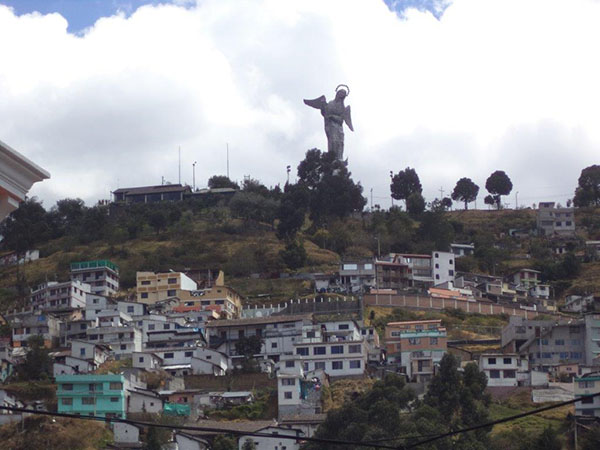Trip Report: Alternative Fall Break in Ecuador
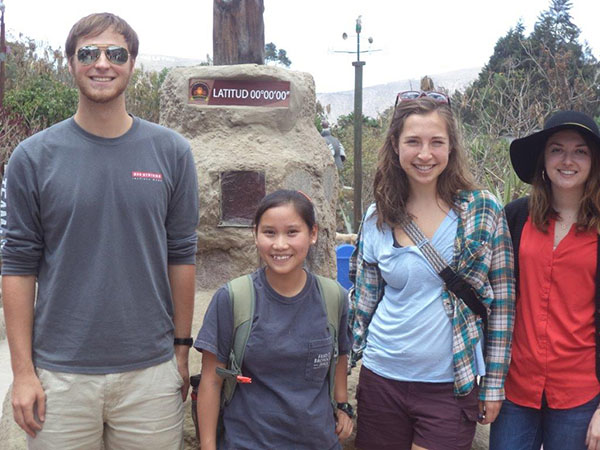
- Read Annabel Large’s report on the Ecuador trip »
- Read Taylor Weiskittel’s report on the Ecuador trip »
The College of Engineering’s Alternative Fall Break took place August 9–16, 2015, in Quito, Ecuador. International Coordinator Judith Mallory accompanied students Annabel Large and Taylor Weiskittel, chemical engineering majors, Heath Skelton, electrical engineering major, and Erika Youngquist, microbiology major, on the trip. United Planet of Boston served as trip provider.
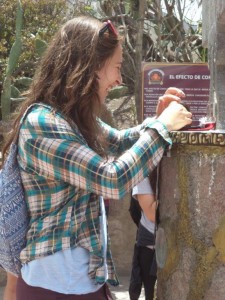
Quito, from the ancient Tsafiqui word “Quitsato,” meaning “middle of the earth,” is the highest official capital city in the world at 9,350 feet above sea level. Its population is about 2.67 million people, and in 2008, Quito was designated as the headquarters of the Union of South American Nations. The city is located on the eastern slopes of Pichincha, an active stratovolcano in the Andes Mountains. Two other volcanoes which border the city are the Antisana and the Cayambe. Mainland Ecuador contains a total of twenty–eight volcanoes and is a tropical country about the size of the state of Nevada. Quito was the first location declared by UNESCO as a World Cultural Heritage Site. It has the highest population density of all of the South American nations, with oil and petroleum accounting for over half the export earnings of the country.
Three major ethnic groups comprise the population of Ecuador: indigenous descendants of the Incas; Mestizos, or a mix of European immigrants with natives; and Afro–Ecuadorians who migrated south from the Caribbean. Although the primary language is Spanish, over thirty indigenous dialects are spoken as well. The US Dollar is the country’s currency.
The first full day of the trip happened to be a national holiday, in fact, Independence Day, first celebrated August 10, 1809. The day was spent touring in and around Quito. The group began by traveling north for about forty minutes towards the Equator. The first stop was at an overlook, el Mirador de Caldera Palualua. Essentially, a caldera is where the mouth of a volcano has collapsed after eruption. Palualua is now farmland which may be observed from the overlook and is accessible by hiking trails.
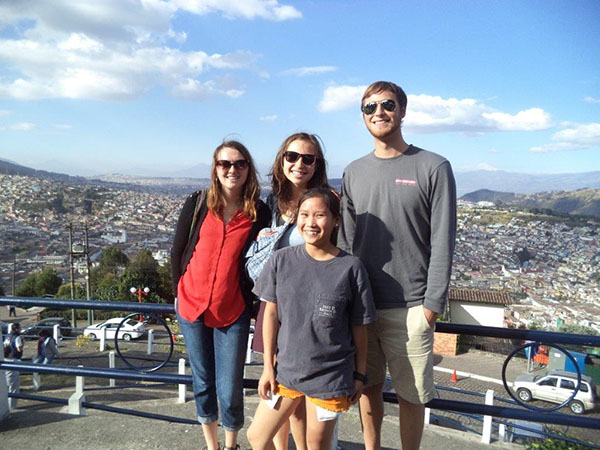
The next stop on the trip was the town of San Antonio de Pichincha, to the Intinan Solar Museum. Nearby this site is where the French Geodesic Mission came in 1735 to measure the earth. The museum featured interactive exhibits on how the Incas determined the middle of the earth, plus science experiments such as balancing an egg on a nail and the effects of the Coriolis force on Earth. The museum contains a solar clock, an anthropological totemic forest of the Andean cultures, and native flora and fauna. Naturally, the Equator runs through the center of the museum. Purportedly, Ecuador is the only site on the planet where the Equator crosses over highlands. On the rest of the Earth’s surface, it crosses through jungle or ocean.
The final stop on the tour was Old Town Quito, the Colonial section of the city, filled with European–inspired architecture, cathedrals, monasteries, convents, and old government buildings. Two notable town squares on the tour were the Plaza Grande and the Plaza de la Independencia, both typical of the public squares of Latin America.
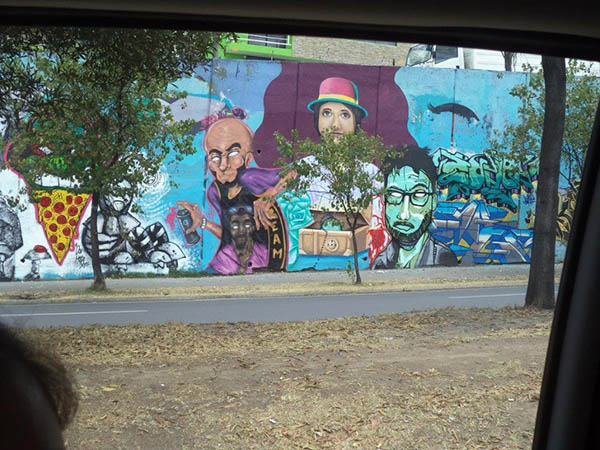
The next day, work began in earnest on the service project. A day care center funded by the government and private donations, Semillas Esperanza, or Seeds of Hope, was the project location. About 100 children, ages four and below, use the center while their parents are at work. Parents pay $10 per week per child. The day care center, located in an old building, was in need of a myriad of repairs. The first project was to install protective netting along the stairways, so that children would not fall off while going up and down stairs. Several pieces of playground equipment received needed repairs as well. A few rooms needed curtains and rods installed, so that the children could nap without bright sunlight coming through the windows. Shelf brackets were installed, as well as walls patched, sealed, and otherwise repaired and prepped for painting. Donated, used lumber was prepared and a fence installed and painted; this ran along the edge of the playground. In addition, landscaping surrounding the play area was tidied. The group also assisted the staff in moving one of the classrooms to another floor. These projects took place over several days during the week.
Students had two conversational Spanish classes as well as a salsa dance class, all provided by local instructors.
On one of the afternoons, the group visited the Fundacion Guayasamin, an art museum devoted to the works of Ecuadorian artist Oswaldo Guayasamin (1919–1999), painter of Ibero-America. The Integration Plaza held quite a few of his sculptures and the main part of the museum, called The Chapel of Man, held many huge paintings depicting the suffering of native people, Hitler’s killing of Europeans during WWII, deaths during the Vietnam War, and the atrocities of the Spanish Civil War. There were also paintings serving as homages to music, the Tribes of America, Salvador Allende, and Fidel Castro. A guide helped to interpret the works, as well as provided history. A tour of the artist’s home, onsite, and his extensive personal art collection was included.
The Saturday field trip was nearly three hours away to the town of Otavalo, home of Ecuador’s largest indigenous market. Goods available for sale included jewelry, alpaca items such as hats, jackets, sweaters, scarves, and blankets, Ecuadorian–made Panama hats, woven items including table cloths, shawls, backpacks, and clothing, and fruits and vegetables. They stopped for a walk up to the Cascada Peguche, a nearby waterfall and park.
The final field trip was up the Cruz Loma Mountain, adjacent to the Pichincha Volcano, in Quito’s Skyrail named the Teleférico, which is the highest in South America, reaching over 13,200 feet in elevation.
The group took an overnight flight back to the US on the final day of the trip.
